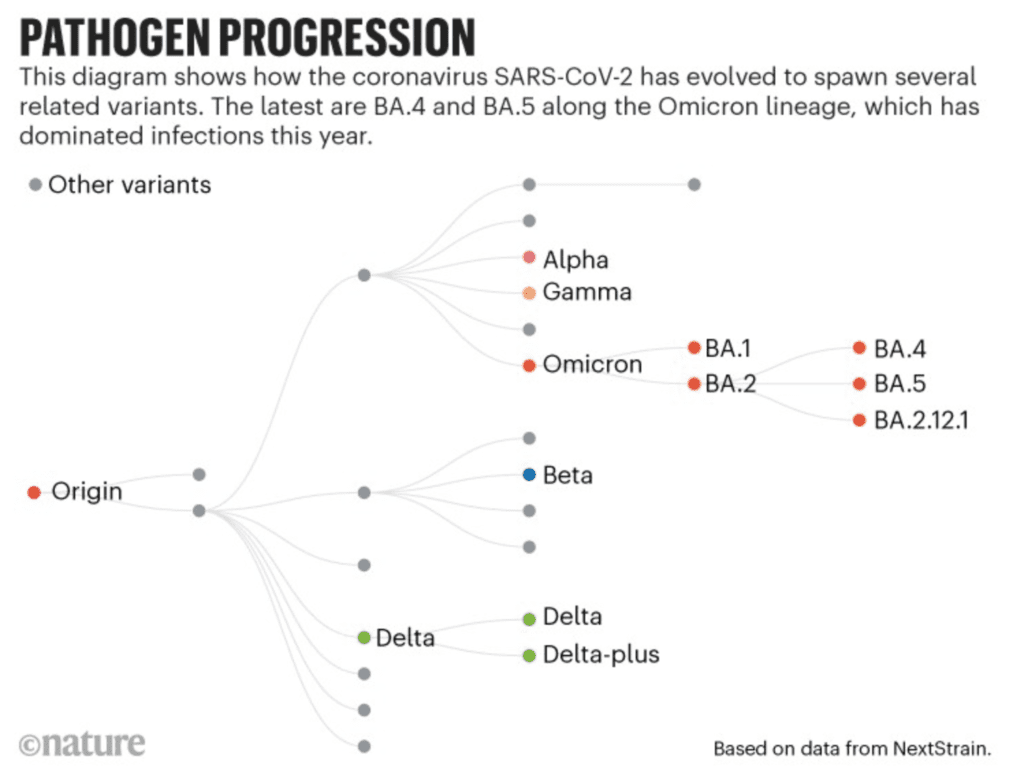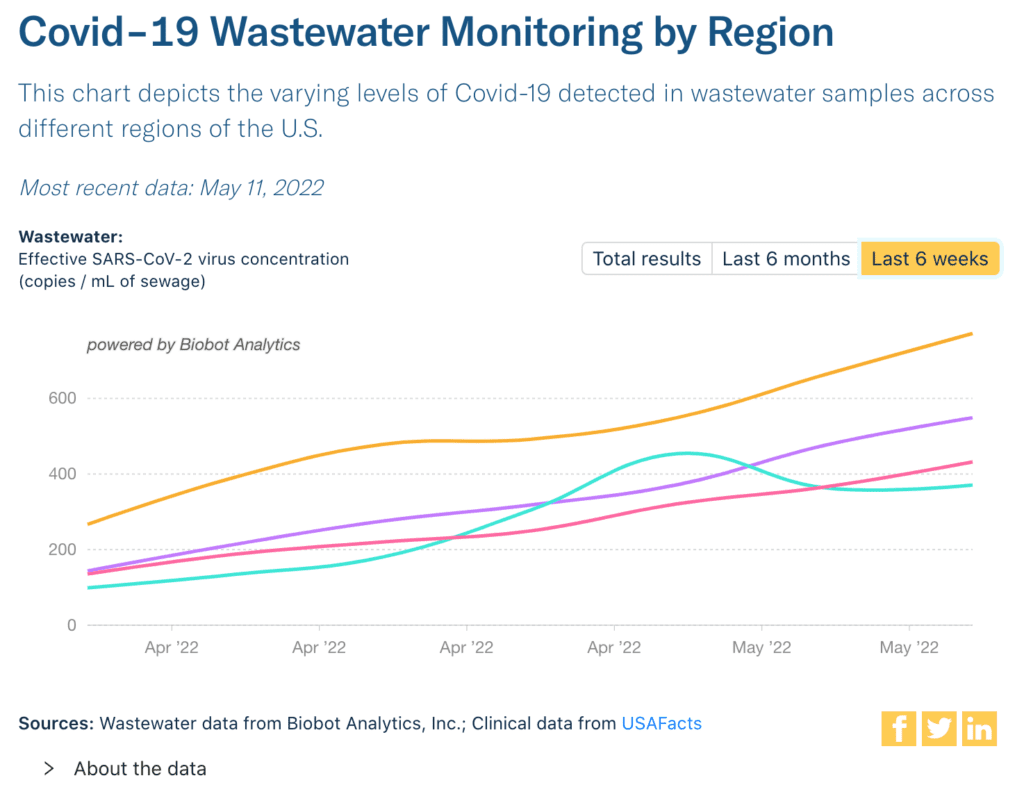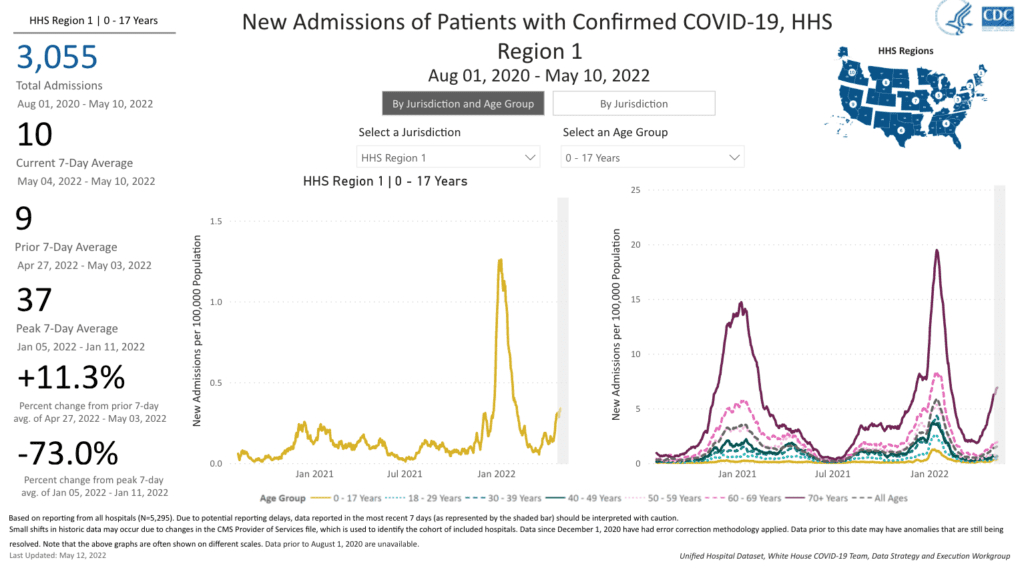This is the @PeoplesCDC weekly update for May 16, 2022! The People’s CDC supports people who want to know how to stay safer during the COVID-19 pandemic. Our Weather Report sheds light on the COVID-19 situation in the United States.
The Current Situation – “The Weather”:
A new wave is clearly here, driven by the new BA2.12 variant. Cases are high almost everywhere in the nation – including reinfections – and hospitalizations are rising.
Using the CDC transmission levels, cases remain very high across the nation. Unfortunately, the new “community level” maps will not turn red until more people are hospitalized.
Overall, 72% of US residents are living in a county with high transmission, up from 57% last week. Another 17% are living in an area of substantial transmission – together, almost 90% of US residents are now at increased risk.
In 2022, we’ve had 3 successive strains of Omicron wash over the country. BA2.12, first identified in the Northeast, is rapidly becoming the most common strain – now at 43%.

We don’t know if more variants will continue to quickly emerge.

Wastewater data does not rely on testing or reporting. Nationally, rates are clearly rising – highlighting the gap in reported cases. Levels are now about the same as the middle of November 2022.

All regions are still rising, with Northeast levels (yellow) still highest, followed by Midwest (purple) next week and South (pink). After an odd bump at the end of April the West (green) is continuing to rise as well.

For the third week in a row, hospitalizations are increasing nationally. In the Northeast, they are at or above peak hospitalizations from the Delta wave. Other regions may soon reach similar levels.
In the Northeast, hospitalizations for children are higher than in the Delta wave. Previously this region had used masks in schools and other layers of protection–we are now observing what happens without those important tools.

Last week, 1,909 people died of COVID-19 in the U.S. A new report shows that in 2021, covid was the 4th leading cause of death in young adults:
And COVID was the second leading cause of death in adults aged 25-44.
Be prepared, whatever the weather:
Vaccination & boosters are important layers of protection. However, we still need vaccines for children under 5, boosters for children 5-11 &–most importantly–updated vaccines that match these variants.
The US government appears unlikely to secure more funding for covid response, even after reducing the proposal from $22.5million to $10million. Last Friday, the White House announced the US will have to ration vaccines due to this failure.
This lack of urgency around health & wellbeing will only result in more disease, disability, and death – the White House predicts 100 million new cases this fall & winter. Instead of securing more funding, President Biden encouraged local governments to use leftover covid funds for police.
Forecast:
We have known that the new CDC community levels would wait too long to “turn on” masking and other protections needed to prevent a surge. As we’ve been saying week after week, we expect to see increases in hospitalizations and deaths.
On Long Covid:
We want to share personal stories of those with Long Covid. Reader discretion is advised as the following story details severe medical symptoms. This week’s story comes from an anonymous musician who has had Long Covid since Spring 2020:
“It has also been difficult to communicate what has been happening to me, because of the non-linear nature of this illness and so much which is unknown about it. One particular challenge is that of ‘hitting a wall’ due to exertion, thus triggering more severe symptoms. This recently happened to me at a live performance: I pushed myself too hard in my preparations for it, and the symptoms worsened until they became severe: from fatigue and shortness of breath to headache, nausea, extreme vertigo, loss of sensation and tachycardia, such that I spent the rest of the concert vomiting in the green room bathroom and eventually became completely immobilized, had to be wheeled back to my hotel room and emergency services needed to be called. Because this illness is so unknown, it is hard to prepare people in my workplace for the eventuality that, even though I might appear perfectly fine to them at a given moment, I might become severely ill if I work beyond my limits. I find myself sneakily finding a sofa or other quiet place to nap to try to prevent these occurrences so that I don’t need to constantly explain this situation to my colleagues.
Apart from the more severe episodes and more frightening symptoms such as loss of sensation in the extremities, difficulty breathing or heart palpitations, there are daily pains, discomforts and obstacles: pains in my legs and chest, brain fog, sleeplessness, the need to wear compression stockings even when sleeping because of my circulatory problems, and the almost constant extreme fatigue. These compound one another, as the difficulties sleeping and the feeling that sleep is unrefreshing contribute to the fatigue, the fatigue contributes to the difficulty concentrating, etc.”
There have been over 450,000 new Covid cases since our last weather report. With the low estimate of 10% of cases resulting in Long Covid, over 45,000 people could soon be having similar experiences to the musician’s story above.
Tiny Tip: Get a home HEPA-filter or make a Corsi-Rosenthal box. They’re great when you have company or if someone in your household tests positive. These tools need to be accessible to all! Check your local electric utility or health department for discounts!